A new report published today has delved into the data to try and determine whether academies get better results than local authority-maintained schools. Schools Week has the pulled out the key findings.
The government’s announcement last month that all schools must convert has thrust the question of whether academies get better results firmly back in the spotlight.
Education data company SchoolDash decided to investigate what the figures tell us and has looked separately at converter and sponsored academies. The findings have been published here.
Schools Week has rounded-up the key points:
First up, converter academies
SchoolDash created a sample group of 792 academies that converted in 2010 and 2011 and have had “well over four years to show what they can do with their newfound freedoms”.
These schools have then been compared with similar schools that have remained under the local authority.
Converter academies are schools mostly rated good or outstanding by Ofsted when they choose to convert. They have greater proportions of pupils with high prior attainment than the average, and also lower than average proportions of pupils who are eligible for free school meals or pupil premium.
GCSE results:
The sample converter academies had 68.1 per cent of pupils gaining five or more A* to C GCSEs, including English and maths, in 2015.
That compared to 66.1 per cent in the similar LA schools.
The figures suggest academies have no perceptible effect on pupils with high or low prior attainment, but may do slightly better with medium prior attainment pupils. In the latter group, 60.5 per cent of academy pupils achieved the benchmark, compared to 57.0 per cent in equivalent LA schools (see Figure 3, below).
GCSE value-added:
The progress for sample converter academies was slightly better overall, at +10.3 compared to +7.0 for the similar LA schools.
The figures show converter academies did much better for pupils with low prior attainment, however, posting +11.1 compared to +4.1 in similar LAs (below).
Do they improve faster?
SchoolDash found there was “scant evidence” that academies improve faster – a claim the government has been accused of positing as a reason why all schools should become academies.
When comparing changes in GCSE results between the two groups from 2012-2015, SchoolDash found their performance was mixed.
For instance, academies did better for pupils with high prior attainment, but the similar LA schools did better for pupils with low prior attainment.
Ultimately, SchoolDash said “academy status in itself hasn’t had much effect – either positive or negative – on their relative performance”.
The group also analysed the difference in the GCSE value-added measure between the groups.
They found that the sample group of converter academies actually made slightly less progress than similar LA schools (below).
SchoolDash conclusion:
Converter academies are generally good schools, but they were like that before becoming academies. While the academies programme may have merits, “obvious improvements in GCSE performance do not seem to be among them”.
What about sponsor-led academies?
These are normally struggling schools that have been required to convert by the government and removed from local authority control with the aim of improving their performance.
SchoolDash analysed data for the country’s 620 secondary sponsor-led academies.
Ofsted grades:
SchoolDash found the proportion of schools per year that remain poorly-rated tends to decrease with time.
The example given is that of the 36 schools that converted in 2007, 28 are now good or outstanding.
However, two are inadequate and another six require improvement.
Improvement after becoming an academy:
Schools do generally seem to improve following this intervention, SchoolDash found.
It said some effect appears to be immediate, although most occurs within the first three or four years. Schools, roughly, seem to reach the national average by year seven.
SchoolDash qualifies this information by stating that while on the face of it, the changes appear “both substantial and sustained”, they should not be over-interpreted and could be caused by other factors.
Compared to similar LA schools
SchoolDash also compared a sample of sponsored academies, from 2010-12, to a group of similar LA schools. Their findings showed:
GCSE results:
The academies sample group had similar GCSE results in 2015 to those of the similar LA schools (43.1 per cent of pupils got five or more A* to C grades in the academies, compared to 43.9 per cent in the LA schools).
Academies did slightly better for pupils with low prior attainment (6.3 per cent compared to 5.3 per cent), and had similar results for medium and high prior attainment pupils.
Value-added:
Academies also do slightly worse than similar LA schools in the value-added measure based on the best eight GCSEs.
Changes in GCSE results:
SchoolDash was able to look at only a subset of 188 schools in each group, but said the message is a “reasonably consistent one of steady improvement relative to LA schools with similar intakes”.
SchoolDash conclusion:
Conversion for sponsor-led academies does appear to result in improved performance and seems to be an effective way to improve the performance of struggling schools.
What the author said:
 Dr Timo Hannay, founder of SchoolDash, said: “Any claims that forced academy conversion will lead to across-the-board improvements aren’t supported by the data.
Dr Timo Hannay, founder of SchoolDash, said: “Any claims that forced academy conversion will lead to across-the-board improvements aren’t supported by the data.
“The most likely positive effect is that it could help to close the gap between the best and the worst-performing schools. But curiously, no one seems to be making that case.”


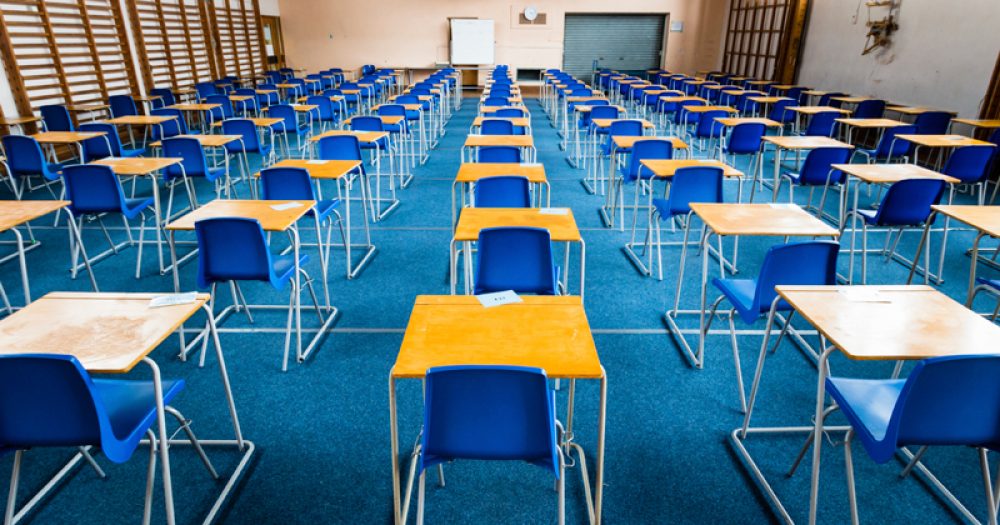


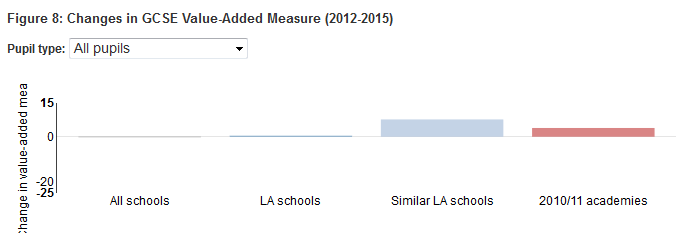
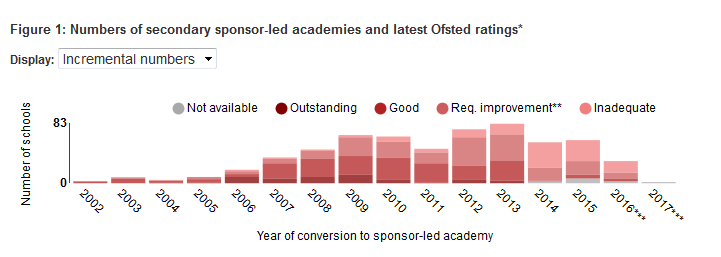
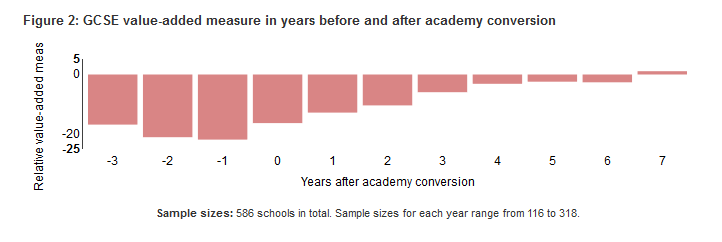
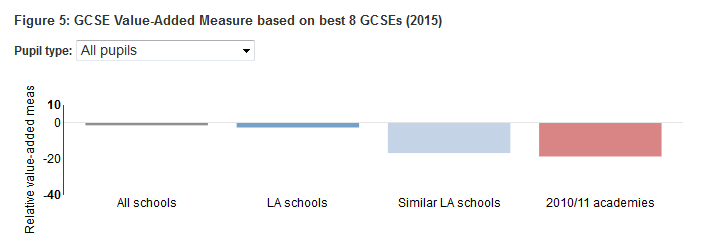





Timo Hanney is a product of McKinsey and a former journalist at The Economist so hardly impartial in his analysis of the data.